Spermidine happens to be a kind of naturally occurring polyamine that has generated much interest due to its probable health advantages such as increasing lifespan, cardiovascular improvement, minimizing inflammation, and maintaining cell health. The best part?
This polyamine compound is found in different foods hence it can be included easily in your meals. This article discusses various sources of spermidine-rich foods under both plant-based and animal-based categories and gives practical approaches to how you can boost your intake of spermidine.
1. Plant-Based Sources of Spermidine
If you’re looking to up your spermidine intake, plants are your best friends. They have not only been known to give us plenty of vitamins and minerals but also comparatively high amounts of spermidine when compared to animal products. Here’s a closer look at some of the top plant-based sources, ranked from highest to lowest in spermidine content.
Wheat Germ (2,437 nmol/g)
Wheat germ is at the top in terms of foods that are rich in spermidine. Wheat germ contains not only vitamins and minerals but also healthy fats too. Containing a whopping 2,437 nmol/g, it’s an incredibly potent source making it more effective than other foods. Adding just one spoonful of this healthy product into your morning oatmeal, yogurt or smoothie drink ensures that one gets a decent amount of spermidines within no time. Plus, it’s easy to incorporate into baking recipes, adding both nutrition and texture to your baked goods.
Soybeans (1,777 nmol/g)
Spermidine concentration in soybeans is 1777 nmol/g thus making them an excellent source. They do not only provide good quality proteins but also they can easily fit into various kinds of meals such as salads and stir-fries. Furthermore, fermented soybean foods like miso and natto have higher levels of spermidine which means that using them in our diets increases our daily uptake rates of this compound.
Green Peas (700 nmol/g)
Green peas may look unassuming but they contain about 700 nmol/g of spermidine making them one among others with high concentrations. These types can be added to almost any dish possible such as salads soups or served separately on side plates as vegetables in addition to being packed with fiber, together with vitamins and minerals thus contributing greatly towards nutrition.
Mushrooms (400–600 nmol/g)
The significant sources of spermidine from plants include mushrooms, specifically shiitake and maitake varieties that possess levels varying from four hundred to six hundred nmol/g. Apart from high levels of this nitrogenous compound, mushrooms have other beneficial elements such as beta-glucans, which promote immune health. Besides adding a delicious background taste to soups, and stir-fries or being used as meat substitutes in vegetarian meals, mushrooms can add umami flavoring. Their uniqueness in terms of texture has made them to be employed in different forms across many cultures.
Spinach (300–450 nmol/g)
There are countless ways spinach qualifies as an all-around nutritional champ. First of all, it’s jam-packed with iron vitamin A vitamin C, and antioxidants. In addition, it has a reasonable amount of Spermidine of between three hundred to four hundred nmol per gram. It can be consumed as part of salads raw or blended into smoothies and it can also be cooked together with food stuffs too! Others even eat it raw so their meals easily become tastier while at the same time they increase nutrient intake.
Broccoli (250–350 nmol/g)
Famous for its health benefits like anti-cancer properties, broccoli is among the best sources of spermidine containing amounts of about 250 to 350 nmol/g. Being cruciferous vegetables, they have an abundance of fibers, vitamins, and different active compounds such as sulforaphane which aid detoxification processes. You can prepare it in different ways, including steaming, roasting, and sautéing, making it very easy to incorporate into your meals. This vegetable can be enjoyed raw by dipping it into hummus or adding it to salads for some extra crunch.
Lentils (300 nmol/g)
In plant-based diets, lentils play a significant role due to their rich supply of protein and fiber but they also do have an appreciable amount of spermidine ranging within approximately 300nmol/g. They are extremely versatile while being simple to prepare and thus can find their way into various dishes such as soups, stews, salads, or even curries. Besides protein lentils offer folates iron and manganese making them foodstuffs packed with nutrients.
Cauliflower (200-300 nmol/g)
Another cruciferous vegetable, cauliflower has spermidine levels of 200 to 300 nmol/g. This is a low-calorie and versatile vegetable that can be used as a low-carb rice substitute, roasted for dinner or pureed in soups to create creaminess. Like broccoli, it contains several health-promoting compounds and vitamins C and K.
Potatoes (150-250 nmol/g)
One of the most common foods in diets worldwide, potatoes have between 150 to 250 nmol/g of spermidine. Often underestimated for their nutritional value, they are good sources of potassium, vitamin C, and fiber. They can be baked, boiled, or fried to make them delicious yet healthy additions to your diet.
Durian (170 nmol/g)
With an intense scent linked with its unusual taste world over the tropics, durians (170 nmol/g) are rich in spermidine while often described as smelling like garbage by many people yet being very healthy foods that provide energy (calories), fiber, and various vitamins and minerals. The ‘king of fruits’ in Southeast Asia due to its high nutrient density makes one ponder if acquiring a taste for this fruit might help boost spermidine levels.
2. Animal Sources of Spermidine
While plant-based foods generally have higher spermidine content, animal products also provide valuable amounts of this compound, particularly for those who include meat and dairy in their diets. Here are some of the top animal-based sources of spermidine.
Chicken Liver (860 nmol/g)
Spermidine is most abundantly found in chicken liver where it is present in a great quantity of 860 nmol/g. The liver in general contains all the nutrients that an organism needs, such as vitamins A and B12, as well as iron. Many might not eat it every day but once in a while having some liver may significantly increase spermidine levels in the body. It can be prepared in various ways, from pâtés to sautéed dishes which give a rich taste to your food.
Aged Cheese (200–250 nmol/g)
Cheese like Parmesan, Gouda, and Cheddar aren’t only tasty but also possess 200 to 250 nmol/g of spermidine. Cheese aging increases polyamine synthesis hence making these types good for sourcing spermidine. Though dairy products should be limited for consumption a bit of aged cheese goes a long way towards keeping our bodies stocked with this substance while at the same time enhancing food flavors.
Pork (150–200 nmol/g)
Pork has been shown to contain spermidine levels ranging from 150 to 200 nmol/g, especially when it comes to lean cuts. It is a good source of proteins with high biological value as well as important nutrients such as thiamine, selenium, and zinc. You can use any kind of pork that you want such as grilling, roasting, or stir-frying to increase your intake of spermidine.
Beef (100–180 nmol/g)
Another animal source for spermidine is beef which contains 100-180 nmol/g on average. Being rich in complete proteins, iron, and various B vitamins including vitamin B12; beef is well-known throughout the world for this. There are various parts of meat on which different cooking methods affect the quantity of spermidines found in them; however beef remains one of the major sources for people who consume red meat.
Fish (70–150 nmol/g)
Fish has between 70 –150 nmol/g of spermidines especially among fatty types such as salmon tuna mackerel herring etc. One of its benefits includes omega-3 fatty acids that help promote heart health while at the same time reducing inflammation. Thus eating fish regularly would not only boost intake of this compound but also ensure proper balance in nutrition including vitamins and minerals.
Eggs (125 nmol/g)
Being packed with nutrients, eggs represent an all-in-one kind of food that contains around 125 nmol/g of spermidine. The egg is viewed as being one of the best sources of complete proteins due to its high concentrations of vitamins such as B12, D, and choline which help promote healthy brain function. Scrambles, boiled or poached, whatever way you choose to have it eggs will serve you with a chance to make the right amount and quality of spermidine for yourself.
Milk (60–90 nmol/g)
For this common dietary component here we see that it has between sixty to ninety nanomoles per gram measuring out the quantities in there because offers you more than one hundred per kilogram and therefore can be incorporated into any dish. For instance, sliced on top of breakfast cereal or blended with yogurt before putting some powder form, etc.
Chicken Meat (70 nmol/g)
Around seventy nanomoles can be found in chicken meat including chicken breast meat with lean parts like skin off breasts constituting most parts known today worldwide because chicken consumption is widely spread making it a versatile food resource having a high protein content. Grilled, roasted, or used in soups or salads — chicken is a simple addition to your diet.
3. Alternate Sources of Spermidine
If you want more ways of getting the compound spermidine into your diet, there are alternative sources apart from the normal plant and animal ones that can help you reap its health benefits. Here are a few examples that may surprise you.
Fermented Foods
Spermidine can be obtained from fermented foods such as natto, miso, sauerkraut and kimchi. The fermentation process improves the flavor in addition to making spermidine more available in these foods. Furthermore, they provide probiotics which are great for gut health thus serving a double purpose in one dish.
Spermidine Supplements
Another option available for people who do not take enough amounts of this substance through diets alone is spermidine supplements. They help ensure steady intake, especially for those who have dietary restrictions or preferences limiting their natural intake. These supplements can be taken as capsules hence suited for people with specific diets like vegetarians who may not eat foods high in this compound.
Whole Grains and Legumes
In general terms, whole grains like oats, brown rice, and barley as well as legumes like chickpeas and beans contain less spermidine than certain other foods such as wheat germ or soybeans. Nevertheless, they contribute significantly to the overall intake besides being rich in other nutrients such as vitamins, minerals, and fiber.
Conclusion:
Spermidine is a necessary natural polyamine compound with many possible health benefits, including increasing lifespan and helping cells heal themselves.
To naturally consume more of this compound, you can add different kinds of spermidine-rich foods to your meal plans, whether from plant or animal sources or through fermentation and dietary supplements.
Remember that good health depends on eating a balanced diet rich in variety while consuming spermidine-rich diets is a good starting point for promoting your general good health.
References:
- Polyamines in Food
- Compound in aged cheese may prevent liver cancer, boost longevity
- Polyamines in foods: development of a food database
- Content of Biogenic Amines and Physical Properties of Lacto-Fermented Button Mushrooms
- Occurrence of Polyamines in Foods and the Influence of Cooking Processes
- Showing metabocard for Spermidine (HMDB0001257)

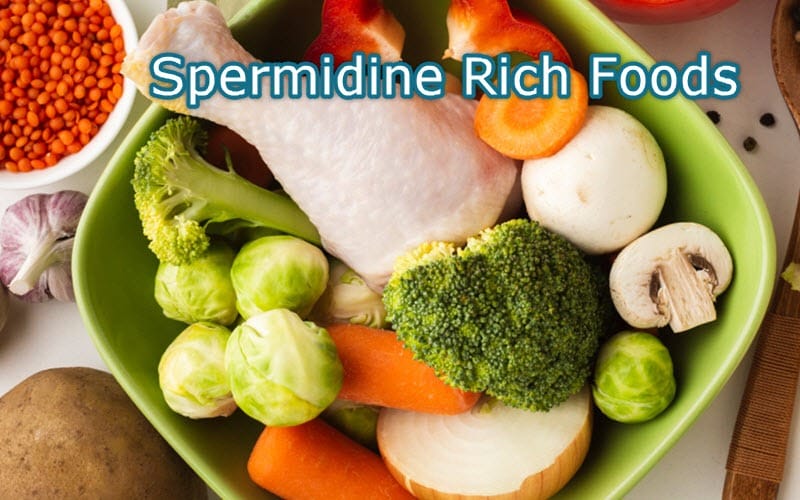
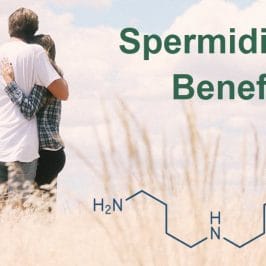
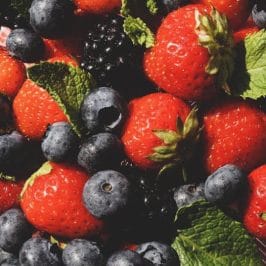
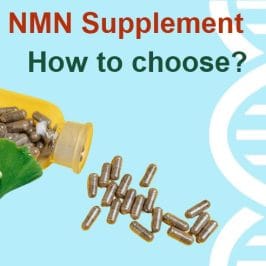
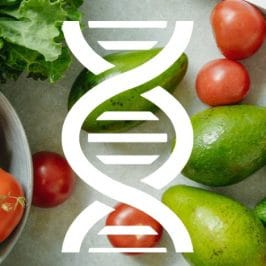


Leave a Reply